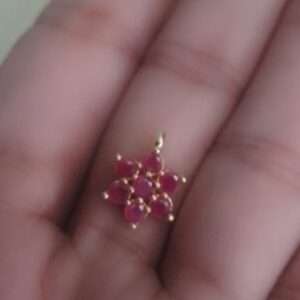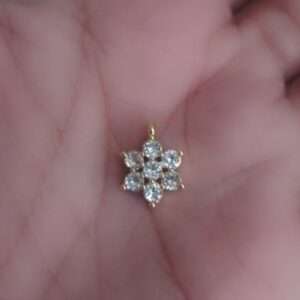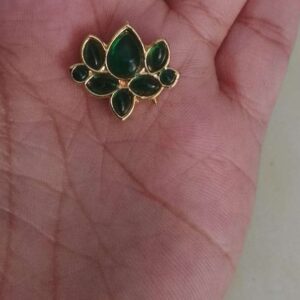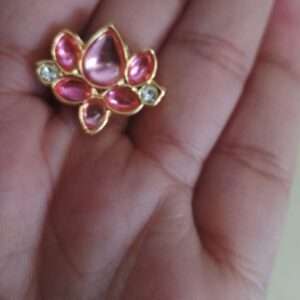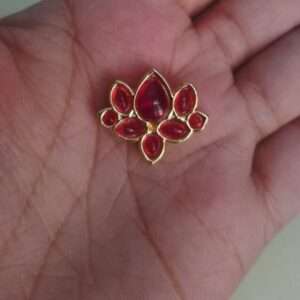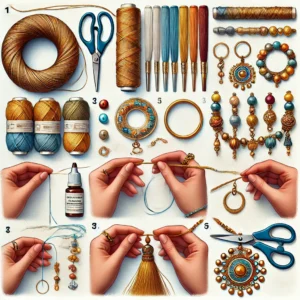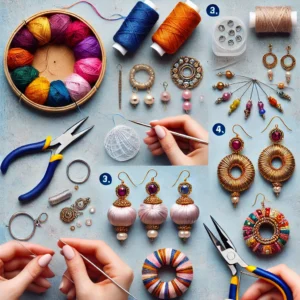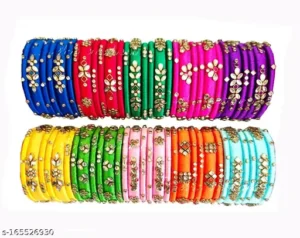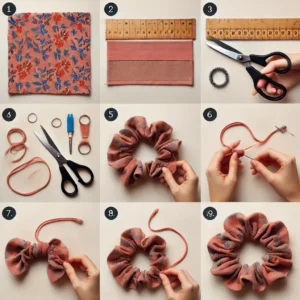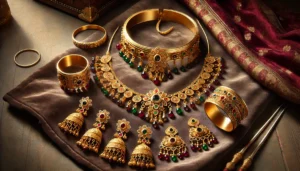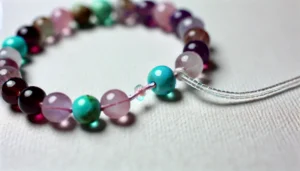Home » Posts tagged 'Artisanal Jewelry'
Tag Archives: Artisanal Jewelry
The unexpected rise of polymer clay and resin jewelry – and why everyone is obsessed!
Discover how polymer clay and resin jewelry are transforming handmade accessories with vibrant designs and endless customization options.
Polymer clay and resin jewelry are quickly becoming popular in the world of handmade accessories, captivating fashion enthusiasts with their vibrant colors, intricate designs, and limitless possibilities for customization. Unlike traditional materials like metal or stone, polymer clay and resin offer artisans a flexible medium to craft unique and eye-catching jewelry pieces, ranging from whimsical earrings to bold statement necklaces. This modern revolution in jewelry design is redefining what handmade accessories can be, attracting both designers and consumers who value creativity and individuality.
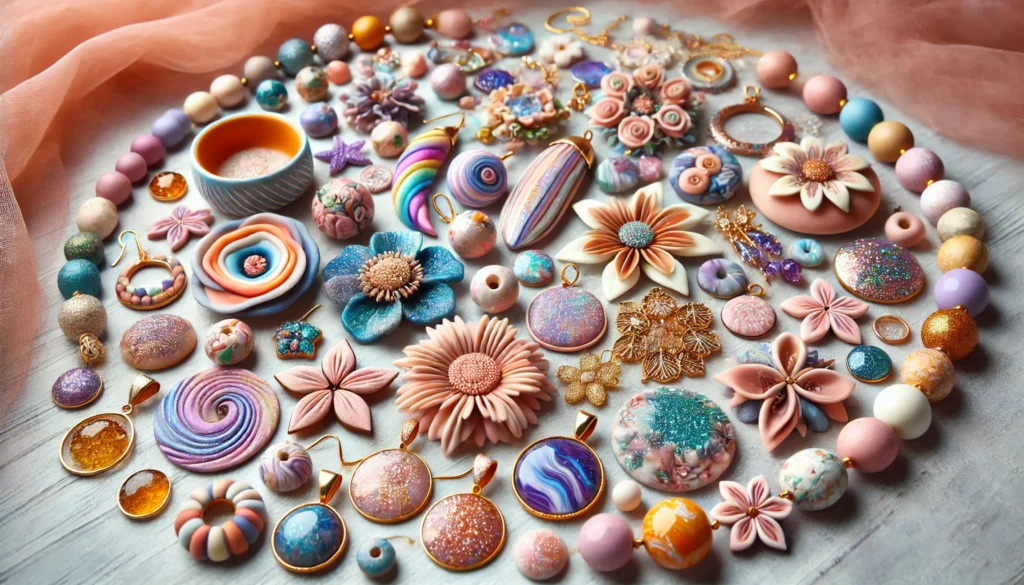
The Rise of Polymer Clay and Resin Jewelry
The popularity of polymer clay and resin jewelry has surged in recent years, driven by social media platforms like Instagram and TikTok, where artisans share their creative processes and showcase their colorful designs. Unlike conventional jewelry, polymer clay and resin pieces are lightweight, versatile, and highly customizable. This flexibility allows artists to experiment with endless shapes, patterns, and color combinations, resulting in jewelry that is as unique as the wearer.
Jewelry designer Olivia Green explained that “polymer clay and resin offer a freedom that traditional jewelry materials don’t. There are no limits to the shapes, colors, or textures you can create, which makes it an exciting medium for artists.” This sense of freedom and creativity is a significant draw for both designers and customers looking for something different from the norm.
How Polymer Clay and Resin Jewelry is Made
Creating jewelry from polymer clay and resin involves a meticulous process that requires both artistic skill and technical knowledge. For polymer clay jewelry, artisans start by conditioning the clay to achieve the desired consistency and color blend. The clay is then molded into various shapes, such as geometric forms, floral patterns, or even abstract designs. Once shaped, the clay pieces are baked in an oven to harden them, making them durable yet lightweight.
Resin jewelry, on the other hand, involves mixing liquid resin with hardener and adding pigments, glitter, or other decorative elements. The resin mixture is then poured into molds and left to cure for several hours or even days, depending on the type of resin used. The result is a glossy, durable piece of jewelry with a glass-like finish. Combining polymer clay with resin is another popular technique that adds an extra layer of depth and shine to the jewelry, creating pieces that are visually stunning and unique.
The Growing Appeal of Modern Handmade Jewelry
One of the key reasons for the growing appeal of polymer clay and resin jewelry is its accessibility and affordability. Unlike precious metals and gemstones, polymer clay and resin are relatively inexpensive materials, making this type of jewelry more affordable for both creators and consumers. This affordability opens up opportunities for artisans to explore their creativity without the financial risks associated with more traditional jewelry-making materials.
Another factor contributing to the popularity of polymer clay and resin jewelry is its eco-friendly aspect. Many artisans use non-toxic, low-waste materials and adopt sustainable practices in their crafting processes. For instance, some use silicone molds that can be reused hundreds of times, reducing waste. Fashion influencer Mia Santos commented that “the eco-friendly aspect of polymer clay and resin jewelry is a big selling point for consumers who want stylish accessories without compromising their environmental values.”
The Future of Polymer Clay and Resin Jewelry
Experts believe that the future of polymer clay and resin jewelry is bright, particularly as the demand for unique, customizable, and affordable accessories continues to grow. With advancements in polymer and resin materials, the possibilities for creating innovative and sustainable jewelry designs are expanding. Additionally, the rise of online marketplaces and social media platforms has made it easier for independent designers to reach a global audience, further fueling the trend.
Artisanal jewelry consultant Nathan Kim noted that “polymer clay and resin jewelry are here to stay. The combination of artistic freedom, affordability, and sustainability makes it a perfect choice for the modern consumer who wants something different.” He added that as more people discover the versatility of these materials, the market for polymer clay and resin jewelry is likely to expand even further.
A New Age for Handmade Jewelry
Polymer clay and resin jewelry represent a new age in handmade accessories, one where creativity knows no bounds. As more artisans and consumers embrace these versatile materials, the jewelry world is witnessing a shift towards more personalized, sustainable, and affordable options. This modern revolution in jewelry design is a testament to the evolving tastes of fashion-conscious individuals who seek to express themselves through unique and meaningful accessories.
Why costume jewelry is making a huge comeback – and it’s more glamorous than ever!
Dive into the world of costume jewelry and fashion accessories, exploring their bold resurgence in affordable glamour and modern style trends.
Costume jewelry and fashion accessories are witnessing a significant resurgence, redefining the concept of affordable glamour in the fashion world. As consumers increasingly look for stylish yet economical ways to express themselves, costume jewelry is stepping into the spotlight with its bold designs, vibrant colors, and endless versatility. These non-precious pieces, often crafted from materials like glass, plastic, and brass, offer the perfect solution for those who want to stay on-trend without breaking the bank. This trend marks a shift away from traditional, high-cost jewelry, embracing a more accessible and diverse approach to fashion.
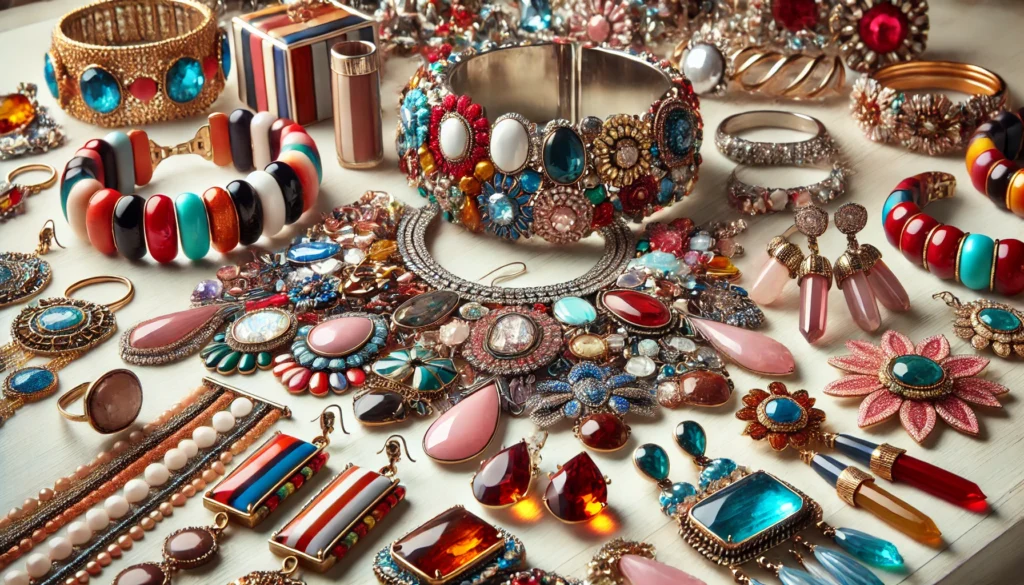
The Evolution of Costume Jewelry
Costume jewelry, also known as fashion jewelry, dates back to the early 20th century when designers like Coco Chanel popularized the concept of accessorizing with non-precious pieces. This idea allowed the masses to enjoy fashion at a fraction of the cost of fine jewelry, democratizing style. Since then, costume jewelry has evolved through various phases—from the Art Deco styles of the 1920s to the bold, colorful pieces of the 1980s, and now, to the eclectic, personalized styles seen today.
Today’s costume jewelry is about more than just affordability; it’s about self-expression and creating statement looks. Fashion historian Laura McBride explained that “costume jewelry has always been a way for people to experiment with their style without the commitment of high costs. It reflects the times, culture, and individual creativity.” As a result, these pieces have become an integral part of modern wardrobes.
How Costume Jewelry is Crafted
The creation of costume jewelry involves a combination of traditional and modern techniques. Materials such as glass, acrylic, resin, wood, and base metals are commonly used to create diverse styles that range from minimalist to flamboyant. Designers often use molding, casting, and electroplating methods to shape these materials into rings, earrings, necklaces, and bracelets that mimic the appearance of fine jewelry.
One of the defining features of costume jewelry is the use of imitation gemstones like cubic zirconia, rhinestones, or even colored glass. These substitutes provide the sparkle and allure of real gemstones without the high price tag. Jewelry designer Adam Cole remarked that “the beauty of costume jewelry lies in its ability to imitate luxury without the cost. It’s a playground for creativity where almost anything goes.”
The Rising Popularity of Costume Jewelry in Modern Fashion
The resurgence of costume jewelry is largely driven by the current fashion climate, which emphasizes versatility, sustainability, and personal style. With fast fashion’s reputation under scrutiny for its environmental impact, costume jewelry offers a more sustainable approach by allowing consumers to update their wardrobes with minimal investment. Furthermore, these pieces can easily be mixed and matched, providing endless options for outfit customization.
The rise of digital influencers and social media platforms has also played a significant role in bringing costume jewelry back into the limelight. These platforms have become powerful tools for brands and independent designers to showcase their collections and connect with a broader audience. Style influencer Nia Clarke noted that “costume jewelry allows people to experiment with trends without a long-term commitment, making it ideal for today’s fashion-forward, budget-conscious shoppers.”
The Future of Costume Jewelry and Fashion Accessories
Experts believe that costume jewelry will continue to thrive as a staple in modern fashion, particularly as consumers seek more sustainable, affordable, and versatile options. The ability to create unique looks with minimal investment is a strong appeal, especially in an era where personal style is highly valued.
Fashion market analyst Serena Patel emphasized that “costume jewelry is more than just an accessory; it’s a form of self-expression. Its adaptability makes it a permanent fixture in the fashion industry.” With advancements in materials and production techniques, the potential for innovation in costume jewelry is vast, promising a future full of bold and creative designs.
Affordable Glamour for Every Occasion
Costume jewelry and fashion accessories have cemented their place in the world of style by offering a perfect blend of affordability, versatility, and creativity. As the fashion industry continues to evolve, these pieces will remain essential for those looking to add a touch of glamour to their everyday outfits without a hefty price tag. With the rise of new trends and changing consumer preferences, the future of costume jewelry looks brighter—and bolder—than ever.
The online boom in handmade jewelry sales – find out how e-commerce is changing the game!
Discover how online craft marketplaces and e-commerce are transforming the handmade jewelry industry, making unique designs accessible to a global audience.
Online craft marketplaces and e-commerce platforms are revolutionizing the way handmade jewelry is bought and sold, connecting artisans with a global audience like never before. Gone are the days when handmade jewelry was limited to local markets and craft fairs; today, thanks to the rise of digital platforms, artisans can showcase their unique creations to customers around the world with just a few clicks. This digital shift has not only expanded market access but also empowered independent designers to thrive in an increasingly competitive industry. As e-commerce continues to grow, it is reshaping the landscape of handmade jewelry, bringing creativity and craftsmanship to the forefront of global fashion.
The Growth of Online Craft Marketplaces
The emergence of online craft marketplaces such as Etsy, Amazon Handmade, and eBay has been a game-changer for the handmade jewelry industry. These platforms provide a dedicated space for artisans to list their products, reach a wider audience, and build their brands. Unlike traditional retail, which often requires significant overhead and inventory management, online marketplaces offer a more accessible entry point for independent designers. This democratization of retail has led to an explosion of creativity, with countless unique jewelry pieces now available to consumers worldwide.
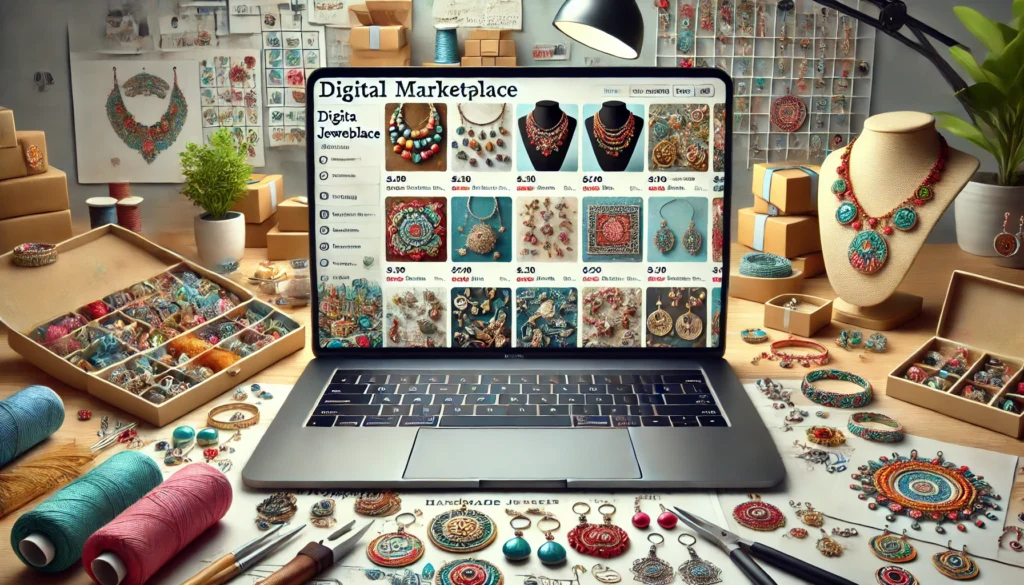
Artisan jewelry maker Sarah Bennett remarked that “online marketplaces have given small designers like me the opportunity to compete with big brands. It’s not just about selling jewelry; it’s about telling my story and connecting with customers who appreciate the artistry.” This direct connection between artisans and customers is one of the key strengths of online craft marketplaces.
The Role of E-Commerce in Expanding Market Reach
E-commerce has further amplified the reach of handmade jewelry by breaking down geographical barriers and making it easier for customers to discover and purchase products from around the globe. With the click of a button, shoppers can browse a vast array of handmade jewelry, read reviews, and make informed purchasing decisions—all from the comfort of their homes. This convenience has fueled the growth of e-commerce in the handmade sector, particularly during the COVID-19 pandemic when physical shopping was restricted.
Additionally, the integration of social media with e-commerce has opened new avenues for marketing and sales. Platforms like Instagram and Pinterest have become powerful tools for showcasing jewelry, with influencers and artisans alike using these platforms to drive traffic to their online stores. Jewelry marketing expert Emily Rogers noted that “social media has transformed the way jewelry is marketed. It’s about creating a visual story that resonates with people, leading them to explore and purchase directly from online stores.”
Challenges and Opportunities in the Digital Marketplace
While the rise of online craft marketplaces and e-commerce has created significant opportunities for handmade jewelry artisans, it also comes with challenges. The increased competition in the digital space means that standing out requires more than just great products; it demands effective branding, SEO optimization, and customer engagement. Artisans must navigate the complexities of digital marketing, from search engine algorithms to social media strategies, to ensure their products are visible and appealing to potential customers.
However, the opportunities far outweigh the challenges. E-commerce allows for a level of flexibility and scalability that traditional retail cannot match. Artisans can experiment with different product lines, test new designs, and gather immediate feedback from customers. This agility is particularly valuable in the fast-paced world of fashion, where trends can change quickly. Market analyst Jessica Stone commented that “the digital marketplace is a dynamic environment that rewards innovation. Artisans who can adapt and leverage the tools available will find success in this space.”
The Future of Handmade Jewelry in E-Commerce
Experts predict that the e-commerce market for handmade jewelry will continue to grow as more consumers seek out unique, artisanal products. The convenience of online shopping, combined with the desire for personalized and meaningful jewelry, will drive this trend forward. Additionally, advancements in technology, such as augmented reality and AI-driven recommendations, are expected to enhance the online shopping experience, making it even easier for customers to find and purchase handmade jewelry.
E-commerce strategist Laura Davis emphasized that “the future of handmade jewelry is online. As technology continues to evolve, we’ll see even more innovative ways for artisans to connect with customers and showcase their work.” She added that the key to success in this space will be a combination of creativity, adaptability, and a strong online presence.
A New Era for Handmade Jewelry Sales
The rise of online craft marketplaces and e-commerce has ushered in a new era for the handmade jewelry industry, offering artisans unprecedented opportunities to reach a global audience. As the digital marketplace continues to evolve, those who embrace the power of e-commerce will thrive, bringing their unique creations to customers worldwide. With the right strategies and tools, the future of handmade jewelry sales looks brighter—and more accessible—than ever.
